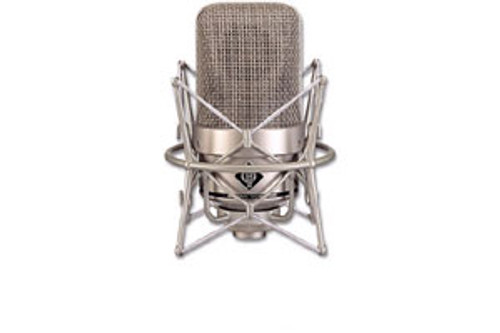Ideal for use with any stereo, ,5.1 or 7.1 surround recording, the M 150 TUBE Condenser Microphone from Neumann offers a dynamic range.
Since the 1950s, the Neumann M 50 has been heralded as the ideal microphone for orchestral recording and string scoring. With its phenomenal transient response and unique directional characteristic, this classic mic has endeared many fans, both in the control room and on the soundstage.
The Neumann M 150 Tube low-noise tube condenser studio microphone takes many of the features from the original M 50 and incorporates them in a very modern microphone. With low self noise, a Titanium membrane and capsule, transformerless tube amplifier and sophisticated power supply, the M 150 Tube is not a re-issue but an entirely new microphone in its own right. The Titanium diaphragm of the pressure capsule is 12 mm in diameter and is exceedingly thin. Although Titanium has been know to have unique and desirable characteristics for some time, it has, until very recently, been very difficult to procure and machine in the quality necessary for use in a microphone of this type. The headgrille is shaped just like that on the original M 50, as requested by various top engineers in the recording industry. Due to mounting the pressure capsule with the diaphragm flush to the surface of a small (40 mm) sphere, the directional characteristic of the M 150 Tube is entirely unique. At the lowest frequencies, this system produces a perfectly circular polar pattern. However, in the mid- and upper frequencies, the pickup pattern becomes narrower, allowing for careful aiming of the microphone in the stereo field.
The M 150 Tube is an ideal microphone for any stereo, 5.1 or 7.1 surround recording, particularly DECCA Tree technique. The dynamic range of the M 150 Tube is 119 dB, allowing reproduction of the full musical expression, without restraint. With a low self noise of 15 dB-A, more gain can be used without risk of adding noise to the final product. The transformerless output circuit of this microphone allows for extremely fine reproduction of small signals and low frequency information. Also, long cable runs can be used with no loss of signal quality.


